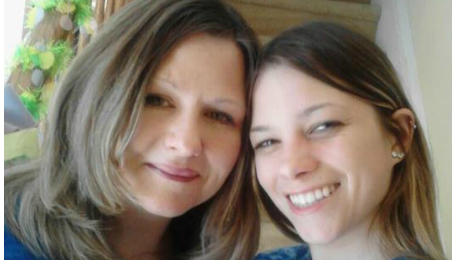Saving the Big Sister I Never Had
For Jennifer Carrino, the journey to a new liver began with a tearful phone call to her cousin Nina Walsh
For Jennifer, it was the most difficult call of her life: asking her perfectly healthy younger cousin, Nina, to consider donating part of her liver. With the odds of finding a deceased donor against her, and time running out – after wrestling with the decision for two days – she picked up the phone and dialed.
 After choking back tears, she finally asked. For Nina though, it was never really a question. “Absolutely,” she told her cousin. Jennifer again started crying. “She said thank you a million times,” Nina would later recount, several weeks post surgery.
After choking back tears, she finally asked. For Nina though, it was never really a question. “Absolutely,” she told her cousin. Jennifer again started crying. “She said thank you a million times,” Nina would later recount, several weeks post surgery.
Once she said yes, “I knew it was guaranteed I was going to live,” Jennifer would later tell the North Jersey Record, in a profile of the cousins. “But [at the same time], I felt horrible because I … just didn’t want her to have to go through all this.”
For living donors, liver transplants can be especially involved, requiring major abdominal surgery, months of recovery and a life long scar. For that reason, the procedure is somewhat uncommon. According to the Health Resources and Services Administration, only 247 out of 6,342 liver transplants performed in 2011 were from living donors.
For recipients though, receiving a liver from a living donor offers a new lease on life, freeing them from the otherwise long wait for the right deceased donor’s organ to become available.
A month after Jennifer’s call, Nina went in for the screening, which included a physical, blood tests, and imaging to ensure her liver was large enough. While initially she didn’t have any real doubts, upon learning she was a match reality began to set in. Given the risks, New York State law requires donors to take two weeks before committing to the decision.
“During my two week cool down period, I was fluctuating back and forth,” Nina would later confess. “It was a life changing decision on my part. It was a toss-up.” In the end though, she decided the chance to save her cousin’s life was worth it. “She’s my cousin; she’s my family and I love her,” she says.
On July 31, the cousins went for surgery. Ever upbeat, Nina joked with the doctors and nurses right up to receiving anesthesia. After coming through, her support team was still by her side. “Everyone in the hospital was absolutely awesome. Dr. Facciuto was awesome. He’s funny. He came to see me and would always look at the incision. Tara my coordinator was the same way. The nurses were absolutely excellent. … Everyone was great, so nice and caring. They treated you with respect, like you’re a person and not a thing.” Jennifer shared similar sentiments.
After a week in the hospital, Nina got to go home. A month later, she started feeling more like her old self, but it would still be a few more weeks before she could get back to work -- or back to what she looked forward to most: hitting the gym.
Jennifer’s recovery has also been strong. “My eyes are white. My skin is clear. It’s just amazing,” she said. Though still on oxygen for a related condition, in time she should be able to come off that too. With further improvement, she’s most looking forward to getting back to gardening – and hopefully becoming a mom.
As much as the experience brought Jennifer and Nina closer together, and for all their appreciation of how it saved Jennifer’s life, both stressed that perhaps the most important part of living donation is that it saves not just one life – but two.
“Because of her doing what she did, now somebody else can have the liver that [would have gone] to me,” Jennifer stressed. Of Nina: “We’re all very proud of her.”
“[Living donation] gives you an opportunity to do something that not everyone has a chance to do,” Nina said. “You have an opportunity to find out what kind of person you are. You are saving multiple people’s lives – you’re saving not just one, but two lives at least.”